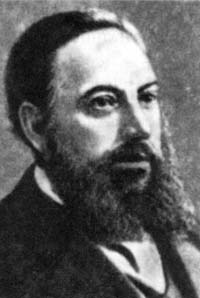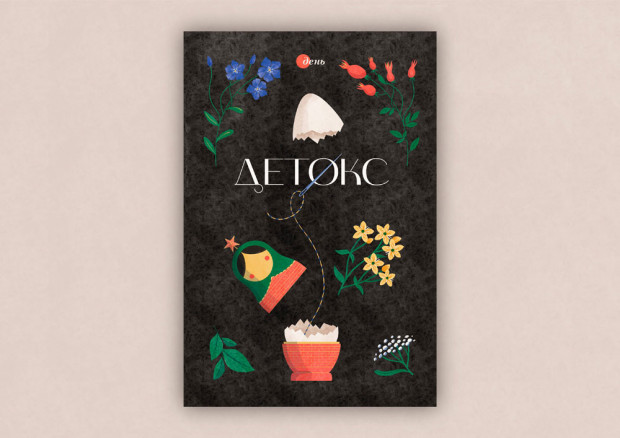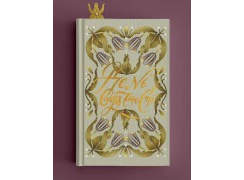An Encounter between The Dnipro River Region And Halychyna
Anthem “Shche ne vmerla Ukraina” performed on March 10, 1865: first documented evidence
No country can have self-respect without an anthem, this musical symbol of a nation, which is immediately identifiable in the world. An anthem, national emblem, and flag are all equally significant attributes, like sacred signs that are enshrined in the heart of every citizen. Showing a lack of respect for them is the worst offense and one that is hard to forgive. Such respect is taken for granted, like love for one’s mother and children. However, before 1991 few Ukrainians knew the words of the song “Shche ne vmerla Ukraina” (Ukraine Is Not Yet Dead). The phrase was often used as a greeting in Galicia (Halychyna), although it was risky even during the thaw, under Nikita Khrushchev.
However, it would be erroneous to assume that people began showing respect for this patriotic song only after January 5, 1992, when parliament adopted the melody as Ukraine’s national anthem. Interestingly, the history of the Ukrainian anthem’s emergence was researched by ОmigrО critics and historians over a number of decades, particularly in the period between the two world wars on the territory of Western Ukraine and after WWII, and especially prior to the 100th anniversary of this most prominent Ukrainian musical symbol.
LYRICS: PAVLO CHUBYNSKY
According to Volodymyr Trembicky one of the Diaspora’s most distinguished researchers, the lyrics of “Shche ne vmerla Ukraina” were composed by Pavlo Chubynsky in 1862, during the first year of his exile in Arkhangelsk. Among the inmates were many Poles and their anthem “Jeszcze Polska ne zginela” (Poland Has Not Yet Perished), also known as Dombrowski’s March, was extremely popular. Inspired by its patriotic content, Chubynsky wrote his poem with the first line borrowed from the Polish song, which pleased the Polish revolutionaries and rebels, who were urging the Ukrainians to stage joint anti-Russian insurgent actions under the motto “For Our Freedom and Yours!”
Pavlo Chubynsky was born on January 27, 1839, in an aristocratic family in a village near Boryspil, in what is now Kyiv oblast. A graduate of the Law School of St. Petersburg University, he took a keen interest in Ukrainian ethnography. As deputy chairman and secretary of the Kyiv Geographic Society, he collected data on Ukrainian daily life and folkways. As punishment for conducting Ukrainian populist propaganda among the peasants of Kyiv gubernia, he was exiled to Arkhangel’sk gubernia in 1862-69. However, in 1875 he was awarded a gold medal at an international exhibit in Paris for meritorious research in ethnography and statistics. Chubynsky had a rather broad range of interests, including ethnology; he also worked as a teacher of geography and in the cultural and educational sphere, organizing drama performances in Kyiv gubernia. He wrote poetry that was later published in a collection entitled Sopilka (The Flute). Eloquent evidence of Chubynsky’s contribution to the development of Ukrainian culture may be found in his Guide to the History of Ukraine, which mentions an addendum to the infamous Ems Ukase, ordering the deportation from Ukraine of two Ukrainian public figures, Mykhailo Drahomanov and Pavlo Chubynsky, who were considered a threat to the tsarist regime. Sofiya Rusova, who knew Chubynsky personally, recalls: “Tall, dark-haired, with dark eyes and thick eyebrows, a low vibrant voice, with authoritative gestures, high forehead, he was a born organizer who knew well what he was doing, he could get people organized and achieve his goal despite all obstacles. Neither the constant persecution by the authorities, nor exile in Arkhangel’sk gubernia could weaken his devotion to Ukraine. During this difficult period he was eager to reveal the rich individuality of his people and the beauty of its folklore!” Chubynsky died of cardiac disease at 45.
MUSIC: MYKHAILO VERBYTSKY
The music of Ukraine’s national anthem was composed by Rev. Mykhailo Verbytsky. Numerous Galician publications, specifically Maria Zahaikevych’s monograph, are devoted to his life and creative work; here we find evidence that the author of the anthem was also an exceptional personality. Mykhailo Verbytsky was born on March 8, 1815, in a priest’s family in the village of Yavirnyk Rusky. He was orphaned at age 10 and Bishop Ivan Snihursky, his paternal uncle, took the boy to Peremyshl, the second most important center of Galicia’s Ukrainian cultural renaissance after Lviv.
Bishop Snihursky of Peremyshl, who fortunately for Verbytsky was his guardian, was a charismatic individual. He founded a Ukrainian print shop in Peremyshl and helped publish folkloric collections and Ukrainian textbooks. In 1818 he even initiated the founding of an institute for deacons, followed 10 years later by a cathedral choir and a music school.
In other words, the move to Peremyshl was a godsend to Mykhailo; he immediately began attending school and singing in the choir, which was his first encounter with high art. In 1833 he moved to Lviv and enrolled in a theological seminary. In 1846 he returned to Peremyshl and completed his music and composer’s education, owing in part to Czech composer Francisek Lorenz, who introduced Verbytsky to the secrets and beauty of Western European music.
Verbytsky is considered one of the earliest professional composers in Halychyna. He wrote choral, solo, and instrumental works, as well as music for the Peremyshl drama group, including “Verkhovyntsi,” “Kozak i okhotnik,” “Protsykha,” and “Zhovnir-charivnyk.” He also wrote a collection of music for the guitar. Some believe he is the author of “Verkhovyna, svitu ty nash” and “Hey, brattia-opryshky,” which are considered folk songs and are still popular. Rev. Mykhailo said that music and songs were prayers and that prayers were music. He graduated from the seminary in 1850 and was ordained. He first worked as a parish priest in several villages and then settled in Mlyny, a village near Yavoriv (currently in Poland) where he remained the parish priest until the end of his life. He also found time to take part in the activities of the Ruska Besida Theater in Lviv. His play Pidhiriany was popular in Halychyna, Poland, Bohemia, and Russia, and was included in the repertoire of Marko Kropyvnytsky’s renowned drama group.
Rev. Verbytsky often walked all the way from Mlyny to the Basilian Convent in Yavoriv, where he taught the gifted nuns to play the guitar. He transcribed a copy of his book Course on Playing Guitar for them and composed many songs that the nuns would teach to Ukrainian girls.
For the second year a choral festival dedicated to Mykhailo Verbytsky will be held at the Children’s and Youth Creativity Center in Lviv this spring. It is slated as a tribute to the memory of a composer whose creative work was devoted to religious choral music (e.g., a lengthy liturgy written in 1847). Researchers believe that Verbytsky masterfully grafted the traditions of the great Bortniansky onto the new church music and that he is the second greatest Ukrainian religious choral composer.
According to Maria Zahaikevych’s book, Verbytsky was the first to write music to Shevchenko’s verse, basing himself on the poet’s works that were published in 1863 in the journal Meta.
ONE SONG FOR TWO EMPIRES
Researchers, however, disagree about the music of the current national anthem “Shche ne vmerla Ukraina.” Volodymyr Trembicky is convinced that when he was composing the music, Verbytsky didn’t know the true author of the lyrics and very likely assumed that the text belonged to Taras Shevchenko, as the journal Meta insisted.
Another contemporary researcher specializing in anthems, Oleksandr Zelinsky, who is associate professor at the Faculty of Music Theory at Lviv State Music Academy, says:
“Historians and music critics alike have failed to establish the exact date of this anthem. However, on June 26, 1863, Omelian Mentsynsky, son of the celebrated singer Modest Mentsynsky, compiled a collection of 30 choral pieces by various authors. The one numbered 24 is the song “Shche ne vmerla Ukraina.” It’s interesting to note that Chubynsky and Verbytsky never met. In 1874 a group of Galicians visited Chubynsky and sang “Shche ne vmerla Ukraina” to Verbytsky’s music.”
The song may have been performed first in the homes of Galician intellectuals and in theological seminaries. There are several theories concerning the public performances of this song. The first Ukrainian drama company, known as Ruska Besida, began functioning in Lviv in March 1864. On March 8, 1864, the theater premiered Zaporozhtsi at the People’s Home. The plot was based on the rhymed story “Cossacks Return from Trapezond” by Polish-Ukrainian author Karol Heinch. The story was boring and the public didn’t like it. The play was revised and another performance took place on December 20, and was again followed by negative press reviews. The only thing that livened up the play was Mykhailo Verbytsky’s song “Shche ne zgyblo Zaporozhe (Zaporizhia hasn’t perished yet). The audience gave it an encore and researchers naturally assumed that this performance was the first rendition of the patriotic song “Shche ne vmerla Ukraina,” except for the opening line.”
Another truly public performance of this choral composition also took place in early 1864 in Peremyshl, in the Providence Hall on St. John the Baptist’s Day, in the presence of the aging Bishop Toma Poliansky, who was deeply moved by the song and gave his blessings to the composer, and the poet from the Dnipro River region. The first clearly documented public performance is dated March 10, also in Peremyshl. The song was conducted by Vakhnianyn during the first Shevchenko concert in western Ukraine (February 26, 1865, Old Style). This launched the triumphant march of this song, which was performed above all during annual Shevchenko festivities.
Mykhailo Verbytsky was buried in the cemetery in Mlyny. At first, an oak cross was erected on the grave. In 1934, on the 70th anniversary of the anthem, the Boyan Society and its conductor Prof. Ilarion Hrynevytsky erected a gravestone with the legend, “To Mykhailo Verbytsky, composer of the Ukrainian National Anthem.” In 1938 Boyan and the Mykola Lysenko Society erected a stone lyre-shaped monument.
It would be erroneous to assume that our contemporaries show little respect for the anthem’s author. In 1995 the residents of Lviv raised funds to restore the monument and tidy up the adjacent territory. In 1997 Ukraine’s first monument to the composer of the immortal song was unveiled in Yavoriv. A chapel was built in Mlyny to commemorate the 140th anniversary of the first public performance and the 190th anniversary of the composer’s birth. Over 100 organizations, enterprises, and institutions in Lviv oblast contributed to this worthy project. A large delegation from Lviv oblast will visit Peremyshl this year to sing “Shche ne vmerla Ukraina” at the composer’s grave, once again to pay tribute to a creation begotten by the combined talents of the ethnographer and poet, Pavlo Chubynsky, from the Dnipro River region and the clergyman and composer, Mykhailo Verbytsky, from Halychyna. Both men lived and worked in two different empires, Russia and Austro- Hungary. Today this anthem is sung standing at attention by a single Ukraine on its way to prosperity.






